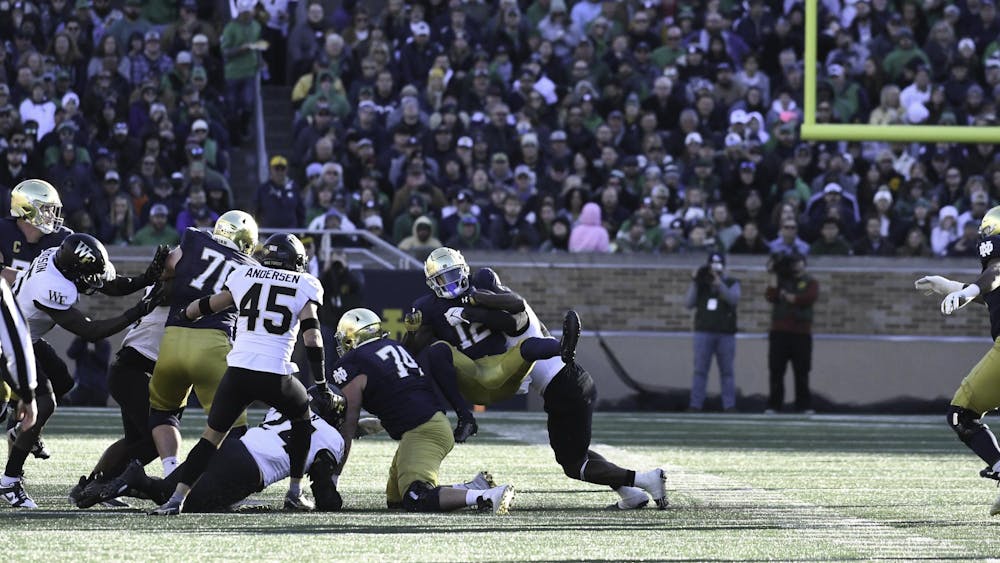Earlier in April, the NFL announced a new rule that would allow for expanded numbers in the different positions. Most drastically, it opened single-digit numbers to running backs, wide receivers, tight ends, linebackers and defensive backs, rather than maintaining the single-digit option solely for quarterbacks, kickers and punters, as per usual.
This decision was met with a wide range of player reactions. Cornerback Jalen Ramsey, safety Derwin James Jr. and wide-receiver Tyreek Hill called a half-serious dibs on 2, 3 and 6, respectively. Derrick Henry decided to make a joke about it, but was also fine with the new decision. The second oldest man in the league, however, was up in arms. Tom Brady took to Instagram stories to voice his frustrations with the decision, providing additional tongue-in-cheek changes he would “want” to see.
His position against the change, he argued, was that players wouldn’t know who to block anymore. While he doesn’t have to worry about that as one of the few positions that don’t block anyone — at least not often, if at all — his point did make me wonder: What was the original number rule? And why did it exist?
The best part about his freak out? The rule really didn’t exist until pretty recent NFL history, and has changed a lot in that time. So what does it say about Brady that he cares so much?
We begin in the 1920s
At this point, rosters were limited to 22 people, so there was no definitive numbers rule. I mean, why would there be? Instead, players just stayed roughly within the first 25 numbers, much like a high school sports team that reuses the jerseys every year.1930s – early 1950s
This is when the system we use now came on the scene. The transition from single-wing football — football that had the offensive line mostly on one side of the quarterback — to t-formation — what we have now—players simply took their numbers with them to the new positions. Because players still played both offense and defense at this point, backs got numbers between 10-49, and the offensive line numbers were 50-89. Then, their offensive number would usually correspond correctly for defense, as you usually stayed on the line if you were on the line and stayed off if you weren’t. The only grey area was linebackers, who could have pretty much any number.There was another league in the 1940s called the AAFC and it had a completely different numbering system, which caused immense confusion on the field. This led to a league-wide standard in the NFL in 1952, only to then adopt the AFL in 1960, which required another adjustment.
Cut to 1973
The AAFC and AFL had such detailed numbering systems that the NFL had to make theirs more rigid. New numbers were prohibited unless you had been playing before the switch, in which case you could be grandfathered in. This system is still in place today.Had the adjustments stopped since 1973, leaving the league stagnant since then in which numbers each person could have and when, I would understand why Brady would be more inclined to keep things definitive. It makes sense that this big of a change to a stagnant system would have some pushback. The problem lies in that it has been changing over time and hasn’t changed much at all.
The last 48 years
Up through 2020, there had been five major changes to the number system. One in 1979 that expanded offensive linemen and center numbers. Another in 1984 for linebackers as more and more teams began to use 3-4 defense and sheerly ran out of linebacker numbers. A third in 2004 allowing wide receivers to wear 10-19. This came after many teams retired numbers in the 8-s and roster growth led to the teams having more WRs. Then in 2010 and 2015, the defense saw two more number expansions in the linemen and the linebackers because of the growing and changing roles of those positions. Defensive ends have become more versatile as 3-4 and 4-3 defenses require both positions from them. Because of this. it makes sense these numbers overlap.The only real difference between any of these changes and the most recent one is that this one affects Brady’s position. At least, he thinks it does, because he stands out less. I would argue any change to only the defensive number system would be a bigger concern for Brady.
If I were a gambling woman, I would bet the real issue for Brady is that the game is changing. Running backs are tanks that push through the line. Wide receivers call on their college quarterbacking to make a touchdown pass. Quarterbacks are triple threats that not only complete the short pass and the deep bomb, but also their ability to take off rivals that of their running backs. Brady is a 43-year-old man who cannot move that way and, honestly, couldn’t when he was 26 either.
The number expansion really does not affect him. It isn’t his fault if the O-line misses a block. It doesn’t rest on him if his defense can’t defend the right people in the right way. And there’s no precedent to say that they would even have trouble. They haven’t since the 1940s, and that was because there were two conflicting systems.













